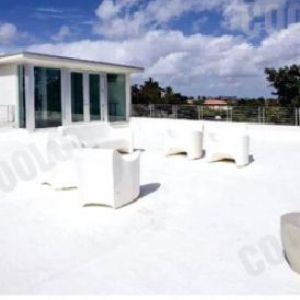How effective is heat reflective paint?Posted by CoolRoofPaint02 on April 2nd, 2021 In recent years, a wide variety of heat-reflecting paints have come on the market. They provide a uniformly visible colour range like standard products but perform very differently in the infra-red region of the spectrum, representing other invisible parts of the solar spectrum. Are they effective in meeting their advertising claims and when there is a benefit to using them? This paper reviews the advertising content and statistics to evaluate their value in an area where there is little sound scientific literature about some products and the technology of others is hidden for IP reasons. Ground-level sunlight in the ultraviolet, visible and infra-red areas can reduce the radiation of the event from 300 to 2500 nm. Includes with wavelength. Any part of the solar spectrum where a surface absorbs incoming sunlight will cause an increase in surface temperature above the ambient temperature. If the heat cannot be re-radiated in the sky, it will conduct the roof spaces completely towards the roof and will continue to rotate downwards through the insulation bats. This creates a heat load on the buildings, resulting in loss of comfort or an increase in electricity bills and an increase in greenhouse gas emissions for air conditioning. The main uses are used individually or in combination; Choose colours to match visible colours using visible colours that also naturally reflect more infra-red radiation, Attempts to ease a complex situation for public consumption mean that advertisements, comments and claims are often made that are technically incorrect. Some paint suppliers not only show the benefits of the measurement criteria but also the 'insulation' claims which are irrelevant and directly false. Heat transfer through the paint coating actually plays a more important role than providing light colours with total solar reflection and a reduction in optimal surface temperature compared to distance. It has also been shown that the use of heat-reflective paint instead of standard paint for a particular colour reduces surface temperature. The benefits of heat-reflective paint are usually small for light colours and small for pure white. Heat reflective shades can attract a premium so there is a point where higher costs do not guarantee use in temperate climates. It can be concluded that the most cost-effective solution for roofing houses against sunlight is to paint the roof with a high build. Heat Reflective Paint White Paint. In many cases, this is not practical because of the brightness. The next best option is to start with as light a colour as possible and then use another type of heat-reflective paint to reduce the surface temperature rise. Like it? Share it! |


